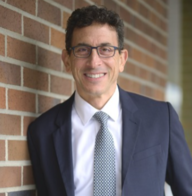-
Madeleine Thomson

Professor, Lancaster University
Madeleine Thomson is Head of Climate Impacts, in the Climate Change and Health Challenge Area at the Wellcome Trust; a politically & financially independent foundation which supports science to solve the urgent health challenges facing everyone. Prior to this role she was the interim Head of Our Planet Our Health at Wellcome. The Trust support researchers, policy makers & the public in tackling some of today’s greatest health challenges, including those associated with climate change.
Dr Thomson is also a visiting Professor at Lancaster University, UK and an Emeritus professor at Columbia University, New York where she previously held senior research positions at the International Research Institute (IRI) for Climate and Society and the Mailman School of Public Health. While at IRI she served as Director of the WHO Collaborating Centre on Early Warning Systems for Malaria and Other Climate-Sensitive Diseases (including meningococcal meningitis and ZikaV) and was co-chair of the cross Columbia working group on global health security.
She was educated at the University of Sheffield (BSc), Imperial College London (MSc) and the University of Liverpool (PhD). -
Michael Johnston Tribute Lecture: Brain Health in newborns: All the way home

Speaker
Steven Miller, University Of British Columbia, Professor and Head, Pediatrics
Chair
Brad Schlaggar -
The Interface of Genetics, DEE, and Epilepsy Surgery
Do we need to perform genetics in presurgical evaluation?
Georgia RamantaniGenetic testing has been recently introduced in presurgical evaluation in many epilepsy centers. Particularly in patients with early onset epilepsy, intellectual impairment, positive family history, and lack of an MRI-detectable focal lesion, genetic testing in the presurgical evaluation may prove crucial for counseling and prognostication. While mTORopathies may be more amenable to resective epilepsy surgery, channelopathies and synaptopathies should be considered more carefully, as they may bear considerably lower chances of seizure freedom. Nevertheless, genetic findings should not be interpreted as exclusive to epilepsy surgery. Patients with a well-defined epileptogenic zone, as defined by electroclinical correlations, clear-cut structural lesions in MRI, and invasive EEG may still benefit significantly from this intervention. Furthermore, genetic testing in the presurgical evaluation may prove essential for cases where the risks of resective epilepsy surgery outweigh its benefits, as in overlapping of the epileptogenic zone with eloquent cortical areas, or where surgical resection is not feasible, as in extensive bilateral cortical malformations. Furthermore, patients with a genetic diagnosis may ultimately profit from targeted pharmacotherapy, irrespective of the indication for surgery. Finally, genetic testing in presurgical evaluation needs to be assessed in prospective multicentre studies drawing from patient registries and illustrating long-term outcomes.
Is there any progress in the surgical treatment of TSC?
Ana Carolina CoanTuberous sclerosis complex (TSC) is associated with pharmacoresistant epilepsy and developmental delay. Seizures usually result from the cortical tubers. Children with TSC and epilepsy have worse cognitive outcomes, and seizure frequency impacts prognosis. The decision of epilepsy surgery in children with TSC can be difficult due to the possible multifocal epileptogenic zone. However, at least 50% of individuals with TSC who undergo surgery can be seizure-free, and an even higher proportion can have a substantial seizure reduction. Since the seizure burden has a significant impact on cognition, not only seizure-freedom but also seizure reduction is a goal to be achieved. Paradoxically, children with TSC and cognitive disabilities have worse seizure outcomes following epilepsy surgery. Seizure control at an early age can improve functional outcomes. Identifying children who might benefit from an early surgical approach is, therefore, essential for the best outcome. In recent years, more aggressive strategies have been used to identify, at an earlier age, those who might benefit from epilepsy surgery. The use of invasive and non-invasive techniques has contributed to defining the epileptogenic tuber. For example, magnetoencephalography (MEG) can distinguish more localized epileptiform discharges closer to the epileptogenic tuber. Also, specific MRI sequences such as diffusion-weighted images can help identify the epileptogenic tuber.
When can we expect surgical success in cortical malformations?
Lakshmi NagarajanAdvances in neurophysiology and multimodal neuroimaging have improved surgical outcomes and reduced the risk of postsurgical deficits in cortical malformations, especially in focal cortical dysplasias. Resective surgery for FCD has a favorable outcome, with complete resection being a predictive factor for seizure freedom. FDG-PET, high-frequency oscillations on EEG, SEEG, have helped to optimize patient selection for epilepsy surgery. Even complex cortical malformation (e.g., polymicrogyria) related DRE patients may have surgical success in well-selected cases. The role of epilepsy surgery in genetically mediated DRE is still being elucidated. Success rates vary widely between patients with different genetic mutations. A Cochrane review regarding surgery for epilepsy concluded that seizure freedom was achieved in 64% of cases; however, the range of success varied from 14%to 93% between studies. The best outcomes of epilepsy surgery are seen in the mTOR and GATOR pathway-related pathogenic gene variants (e.g., tuberous sclerosis). Only limited information is available regarding successful surgery in drug-resistant epilepsies associated with genetic mutations related to altered synaptic function and transmission. The available literature suggests poor seizure control (less than 15% of cases) after epilepsy surgery of patients with SCN1A, SCN1B, CNTNAP2, and STBXP1 gene involvement. MRI-negative patients with genetic epilepsies also have less favorable outcomes than MRI-positive
Is Seizure Freedom the Only Goal?
Faith MoshaIn addition to the primary aim of seizure control, a key secondary aim of pediatric epilepsy surgery is to stabilize and, potentially, optimize cognitive development, behavior, and quality of life. This notion is particularly relevant for young children with developmental arrest or regression due to drug-resistant epilepsy (DRE). Considering the prevalence of developmental issues (windows of opportunity) in young children, there is an urgent need for more refined epilepsy surgery outcomes for the pediatric population undergoing epilepsy surgery than only seizure outcomes. Benefits in developmental, cognitive, behavioral, and QOL domains related to epilepsy surgery are crucial for affected children and their families. This view should be considered when 1) proceeding to surgery in the presence of a resectable epileptogenic lesion in the non-eloquent cortex before the criteria of pharmacoresistance are met, 2) offering palliative surgery in young children to alleviate seizures and prevent cognitive decline. To this purpose, it is crucial to establish collaborative, systematic, multicentric, unbiased, prospective studies for pediatric patients who undergo epilepsy surgery, including long-term seizure outcome data and outcomes of cognition, behavior, and quality of life, and complications.
-
Verushka Ramanjam

Neuro-developmental Paediatrician, Red Cross War Memorial Hospital, University of Cape Town
Dr Ramanjam is a Neuro-Developmental Paediatrician working at 2 Military Hospital and Red Cross Children’s Hospital and the University of Cape Town, South Africa. She is a full-time clinician and, undergraduate and post graduate teacher who manages a range of Neurological and Developmental Disorders including Autism, Cerebral Palsy, ADHD, Epilepsy, Learning Disability, Genetic Disorders and many others. Dr Ramanjam is one of the founding members of the multidisciplinary Neurofibromatosis clinic at Red Cross War Memorial Hospital in 2003, where she has focussed her research. She is an executive member of the Paediatric Neurology and Developmental Association of South Africa (PANDA) and is on the scientific programme committee of the International Child Neurology Conference (ICNC) 2024.
Join Our Newsletter
Why Join the ICNA?
